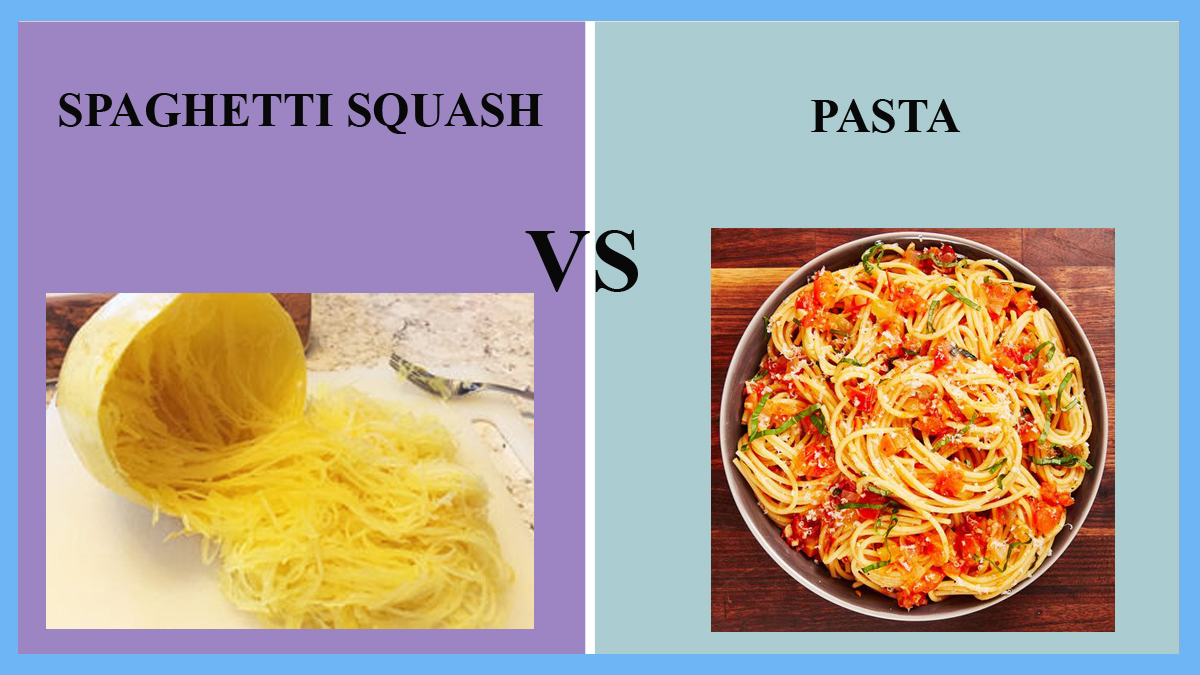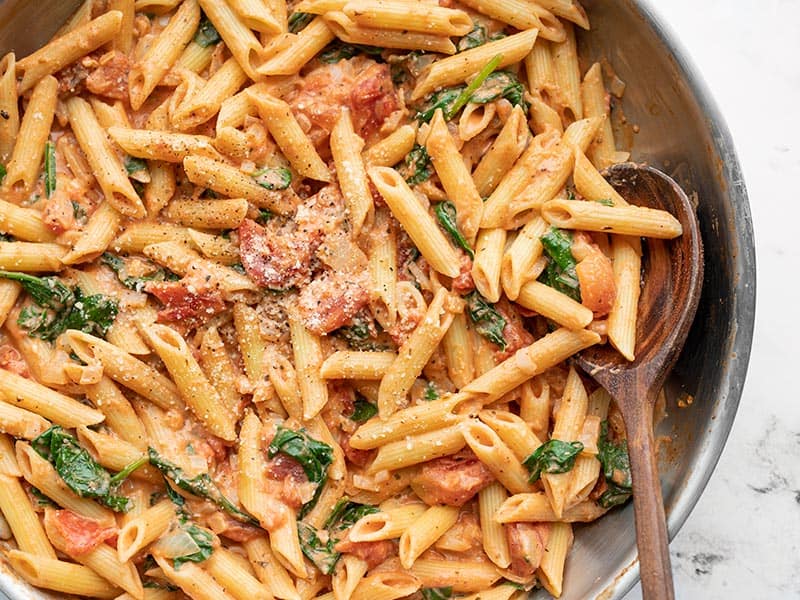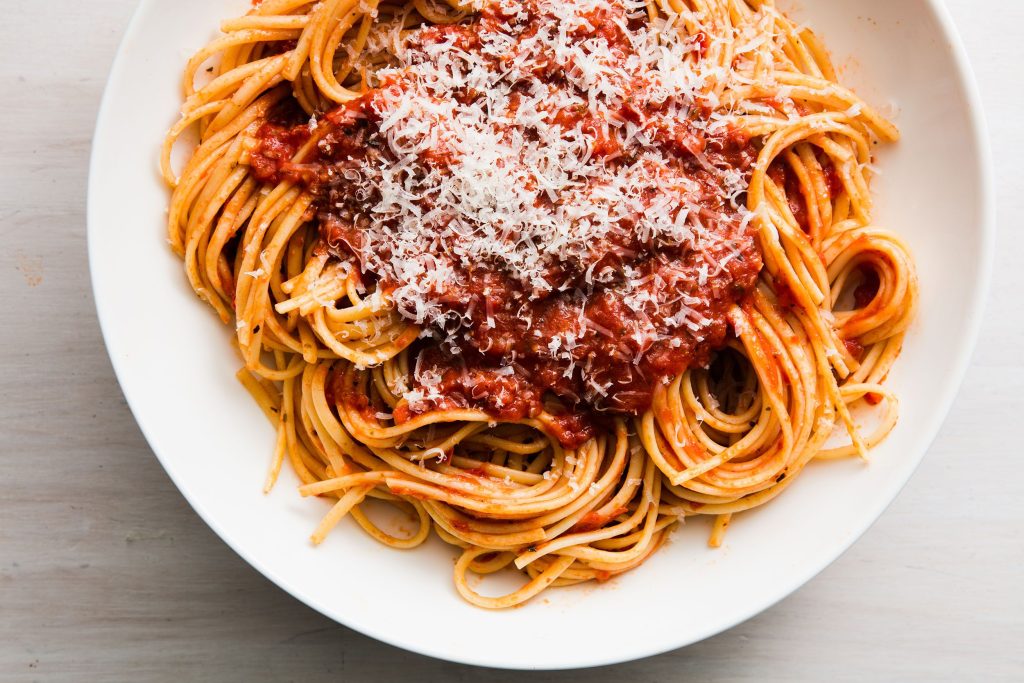What's the Difference Between Pasta and Spaghetti?

We may eat delectable food in any restaurant or even at home, thanks to our Italian friends who graciously shared their delectable cuisine with the rest of the globe. Pasta meals are among the most popular and famous Italian dishes.
Technically, pasta and spaghetti are not the same things. However, there is still a discussion pending between pasta and spaghetti before salivating over Italian cuisine. Is it the same thing?
Do you understand what I’m saying? Pasta is a catch-all name for any pasta-based dish. Spaghetti is a type of pasta, on the other hand. If not, keep reading to find out more.
Pasta vs. Spaghetti: What’s the Difference?
Pasta

When you mention spaghetti, you’re referring to a wide range of options. Italians use this phrase to describe a cuisine cooked from unleavened flour, eggs, and water and shaped into various forms.
This basic pasta recipe can be used to make various pasta shapes, including macaroni, rigatoni, penne, carbonara, ravioli, lasagna, and spaghetti.
These are then boiled to achieve that al dente bite, which is a word for pasta that has been cooked to perfection. Not too mushy, not too firm, just the exact amount of bite to entice you on a gourmet adventure unlike any other.
Spaghetti

Spaghetti is a stranded pasta. Most of us are familiar with the long, thin, and cylindrical pasta strand.
Italian cuisine is one of the most popular kinds of pasta. As a result, it has gained worldwide fame along with its ideal coupling of spaghetti sauce.
Nowadays, spaghetti comes in a variety of shapes and sizes. The thicker spaghettoni and the thinner capellini are the two types of pasta. Spaghetti is unquestionably famous all around the world. It’s widely available in supermarkets all around the world.
| Characteristics | Pasta | Spaghetti |
| Ingredients | White or wheat flour, water, and eggs are usually used. Depending on the sort of pasta you’re creating, you’ll need different types of flour. Some kinds of pasta have a specific flour that should be used. | It’s made of semolina, a type of wheat flour, which explains its solid-state. Other types of flour can be used, but semolina flour is preferable for achieving an al dente flavor when cooked. |
| Sizes | Pasta comes in a variety of sizes. There are large sheets of pasta as well as little rolls of pasta. Lasagna sheets are an example of a large pasta variant, while macaroni is an example of a smaller pasta variant. | Spaghetti is a long, thin noodle that looks almost comparable to other noodles. When cooked, however, it becomes more solid and compact. |
| Shapes | You may make a variety of pasta shapes out of the same dough. Tortellini (looks like a pocket), rotelle (looks like a wheel), bow tie, shell, and orecchiette are some of the most notable (looks like a mini flatbread). | The spaghetti has a cylindrical shape that is perfectly uniformed into a strand of pasta. |
| Texture | Since all of the pasta contains the same ingredients, it has a similar texture. The dough looks like playdough when it’s not cooked, but it’s smoother and softer. It has an al dente (firmer) bite when cooked properly. | Spaghetti has the same texture as any other pasta. When raw, the dough is smooth and soft, but when cooked al dente, it becomes stiffer. |
| Aroma | When cooked, most pasta has a softer aroma that does not overrun the kitchen. It smells like a combination of flour and eggs, yet it’s not overpowering. That’s why adding some kind of pasta sauce to it helps it smell better. | Spaghetti, on the other hand, has a softer fragrance. You won’t be able to smell it unless you get too close to it while it’s cooking. |
| Taste | Pasta is made to be bland, with only a faint flavor when seasoned with a pinch of salt. It’s made that way so it can work nicely with various pasta sauces without becoming overly salty. In order for the pasta to absorb all of the flavors from the spaghetti sauce, it must first be cooked. | Spaghetti is often bland, but if you prepare it at home, you can season the dough with additional salt to taste. However, it is essential that it be bland in order to integrate effectively with bolognese or spaghetti sauce. |
FAQs
Which is healthier, spaghetti or pasta?
They’re both in good health. Many pasta or spaghetti varieties flavored with spinach, carrots, and other vegetables are available in supermarkets.
Some people might use other flour for a healthy option, such as gluten-free and wheat flour. You can also try adapting the recipe to suit your needs at home.
Pasta or spaghetti: which is easier to prepare?
Spaghetti would be a more convenient option. It does not necessitate creating a large number of shapes, which might be time-consuming.
All you need is absolute precision while cutting the dough into long, thin, and cylindrical strips. You might also buy a spaghetti cutter to make things easier.
Other pasta shapes, such as rotelle and macaroni, are more challenging to produce because of their shape.
Is it possible to make spaghetti using a different sauce besides tomato sauce?

Of course. Spaghetti is a versatile pasta that goes well with almost any sauce. Garlic oil, carbonara sauce, pesto, and any other type of pasta sauce you can think of are all excellent options.
Let’s make pasta!
In the future, maybe this article will assist you in distinguishing between pasta and spaghetti. They’re similar. Always keep in mind the technological differences that set them apart.
Aside from enjoying your favorite pasta meals, educating ourselves about what we’re putting in our bodies is essential.











